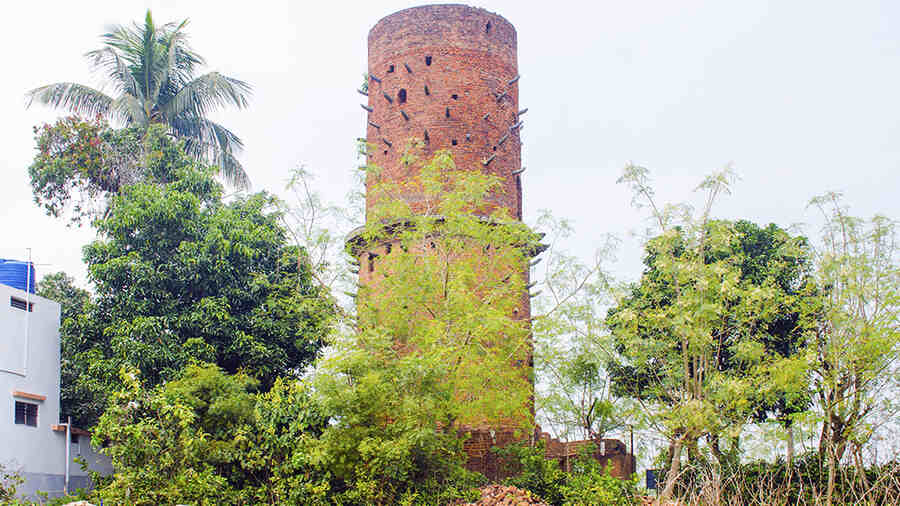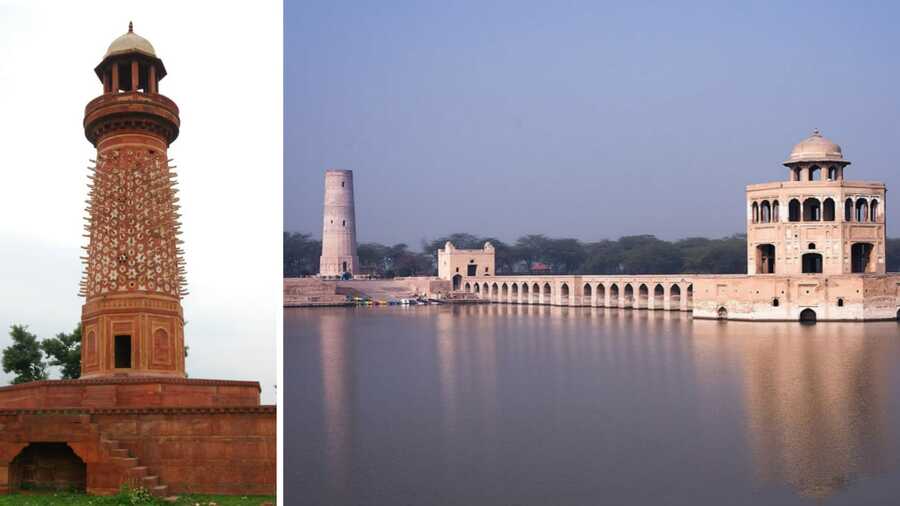In Malda district are two well-known historical sites dating back to medieval Bengal — Gour and Pandua. As flourishing cities, the two were connected by trade routes. Strewn across both towns are ruins of the older cities that indicate flourishing medieval settlements, among which is a tower from one of the numerous old inns that used to line these routes.
Trade routes in those days were not safe – they often passed through forested regions teeming with both dangerous wildlife and dacoits. Along the routes were inns and sarais that provided food and shelter to travelling merchants. Some of these sarais had watch towers, which were visible from a long distance away and guided travellers. At night, torches were lit on the outside of these towers as a beacon for guests.
The inns that once lined the roadway connecting the two citadels have long vanished, but one of the towers still stands in the Nimasarai area north of Malda town and is called the Nimasarai Minar.
The Nimasarai Minar

It is said that the tower, reportedly built by Akbar, used to have elephant tusks mounted on its outer walls Rangan Datta
The word nima translates into midway and sarai comes from the Mughal-era word for inn. So, it is fair to assume that the tower, which stands south of the Kali river, near the confluence of the Mahananda and Kali rivers, was part of an inn midway along the road connecting Gour and Pandua.
It is said that the tower, reportedly built by Akbar, used to have elephant tusks mounted on its outer walls. There are two other such documented towers with elephant tusks on the surface — one in Agra’s Fatehpur Sikri and the other in Sheikhupura, Pakistan, both called Hiran Minar. There are many theories about the use of these tusks. Some historians believe they were ornamental, others say they were used to hang the heads of executed criminals as a warning and deterrent.

(Left) the Hiran Minar in Fatehpur Sikri, Agra, and (right) in Sheikhupura, Pakistan Wikimedia Commons Wikimedia Commons
At Nimasarai, the top section of the red-brick watchtower has long collapsed and the elephant tusks replaced with wooden spikes. Only the two lower storeys still stand, rising to a height of 18 metres. Each level of the slightly tapering tower is marked by a projecting cornice and the walls punctuated by shafts to allow the wind and light to enter. The minar stands on an octagonal base and a spiral staircase inside leads to the top. It is open to visitors, but kept locked. If the caretaker is around to open it up, you can walk up to the top.
Unlike its well-known counterparts in Agra and Sheikhupura, the Nimasari Minar of Malda needs maintenance and stands as a lesser known sentinel of history, off the beaten tourist path in Malda.
Rangan Datta is a mathematics and management teacher by profession and a travel writer and photographer by passion. He has been addicted to discovering off-beat places since his undergraduate days at St. Xavier's College. Blogging and contributing to Wikipedia are his other passions.
